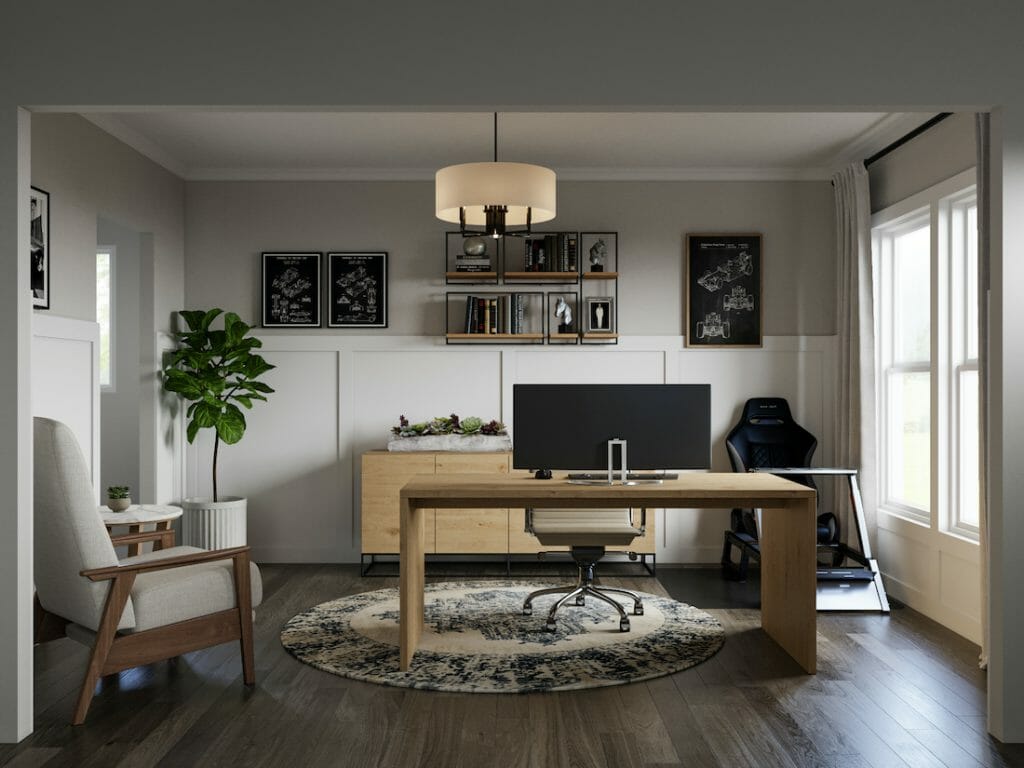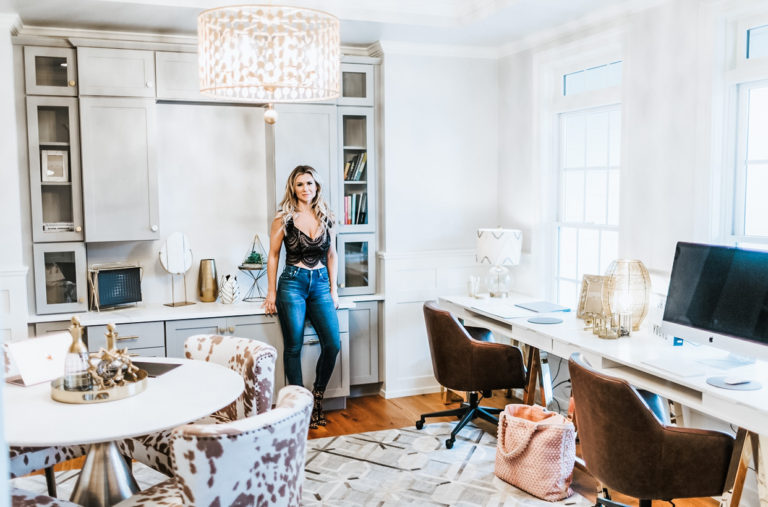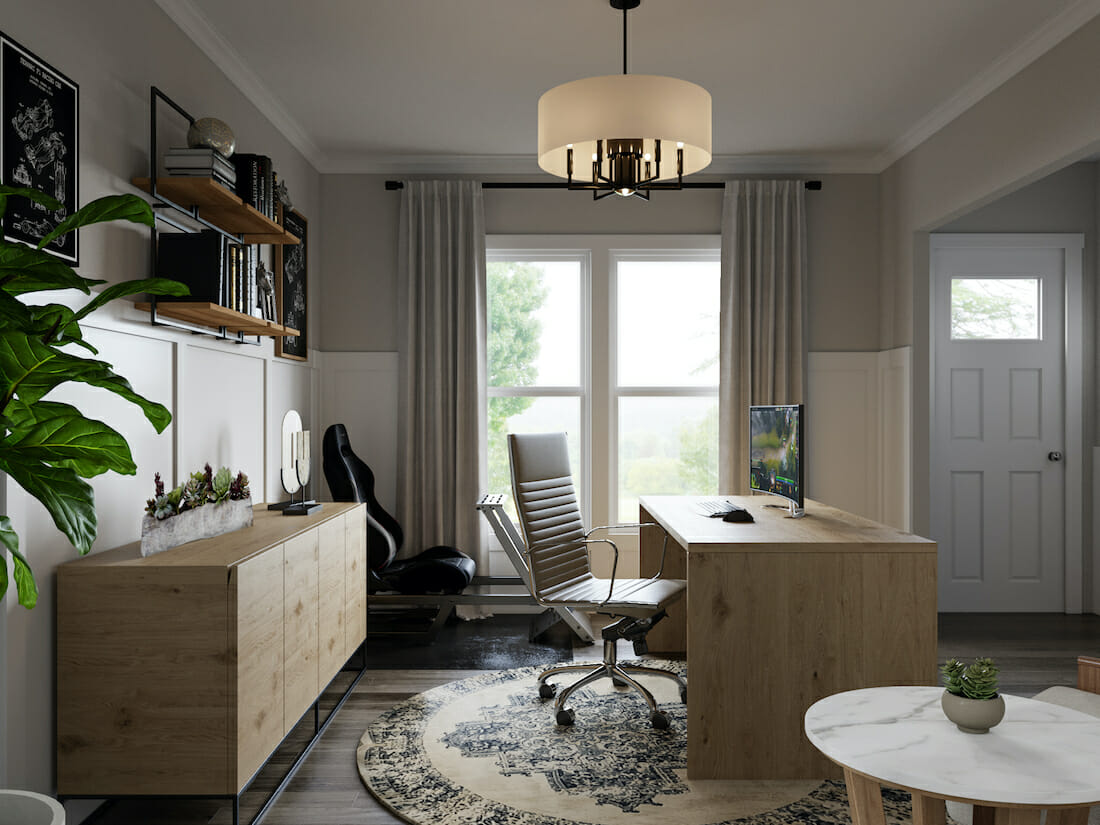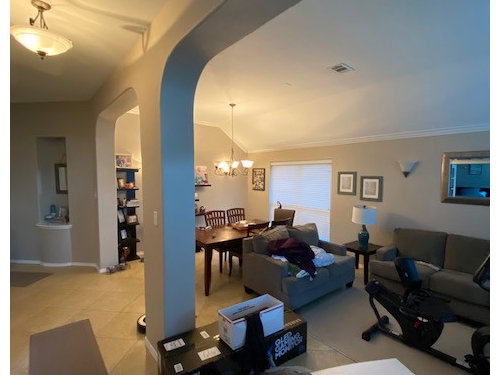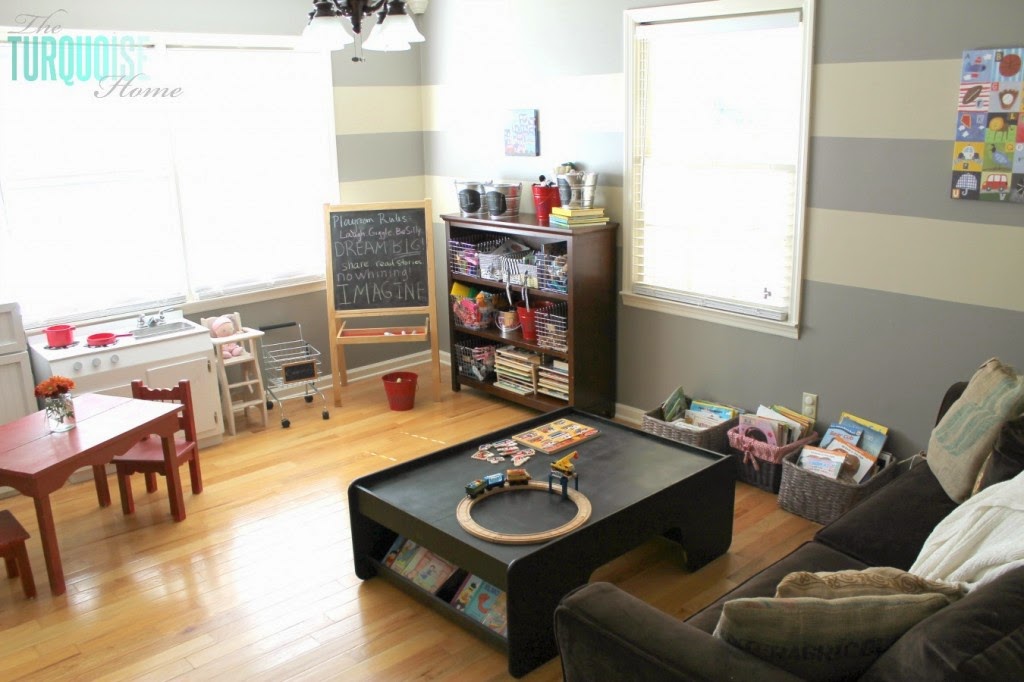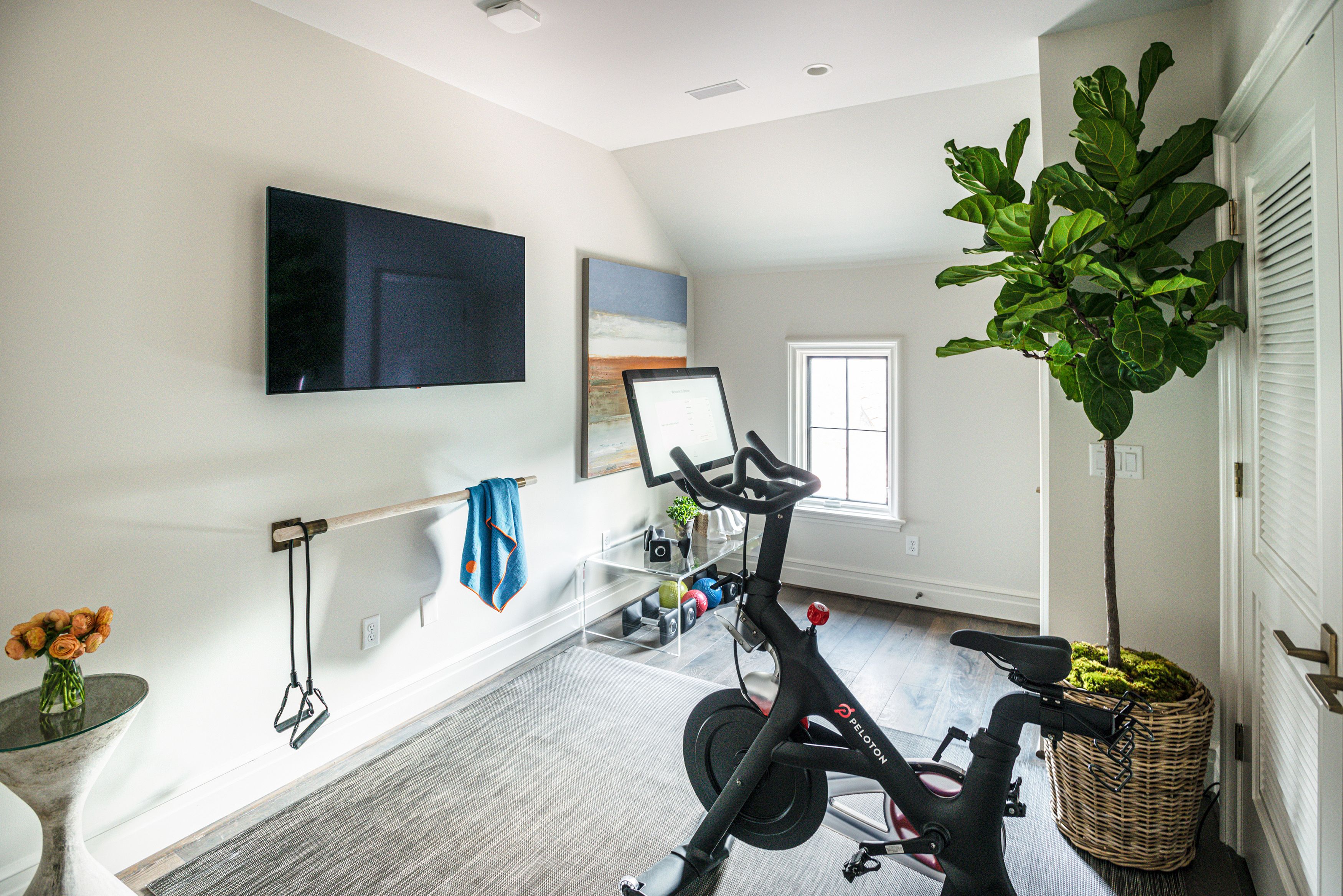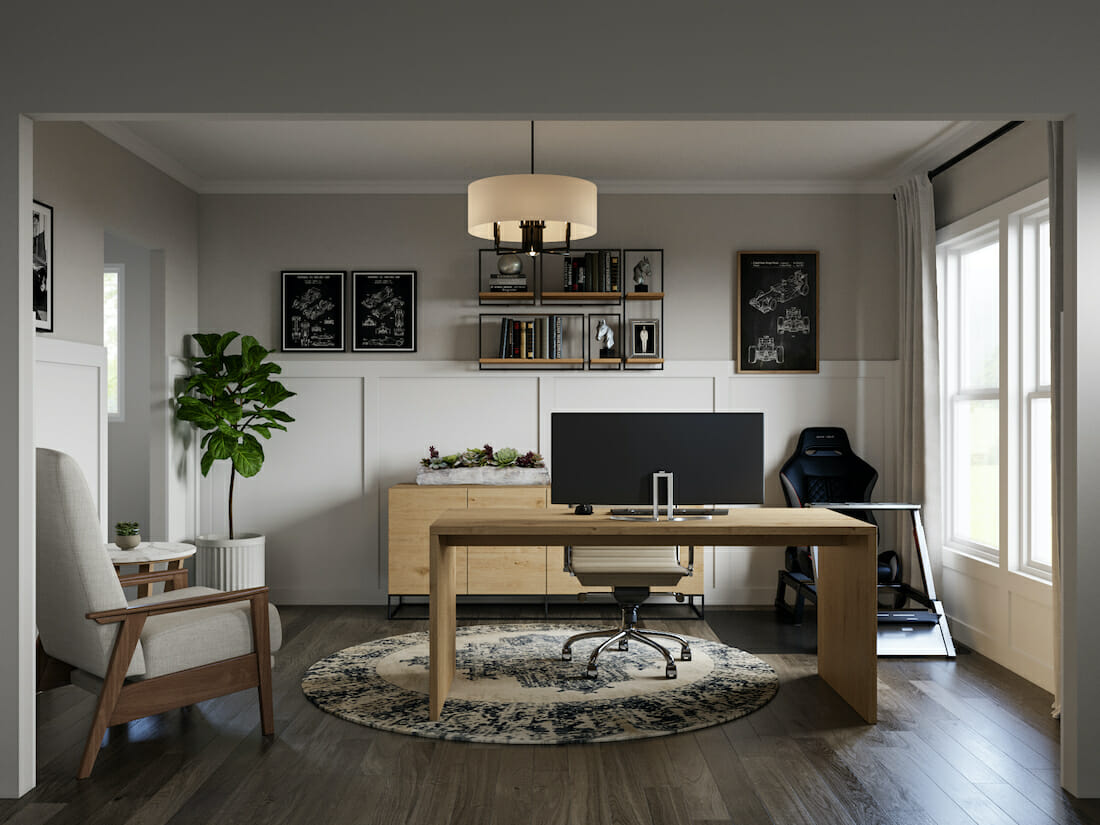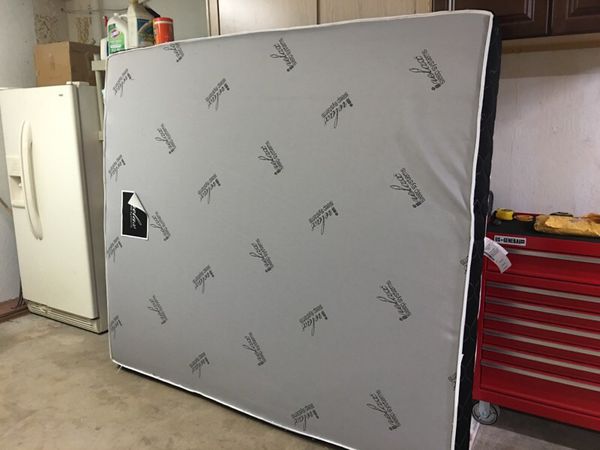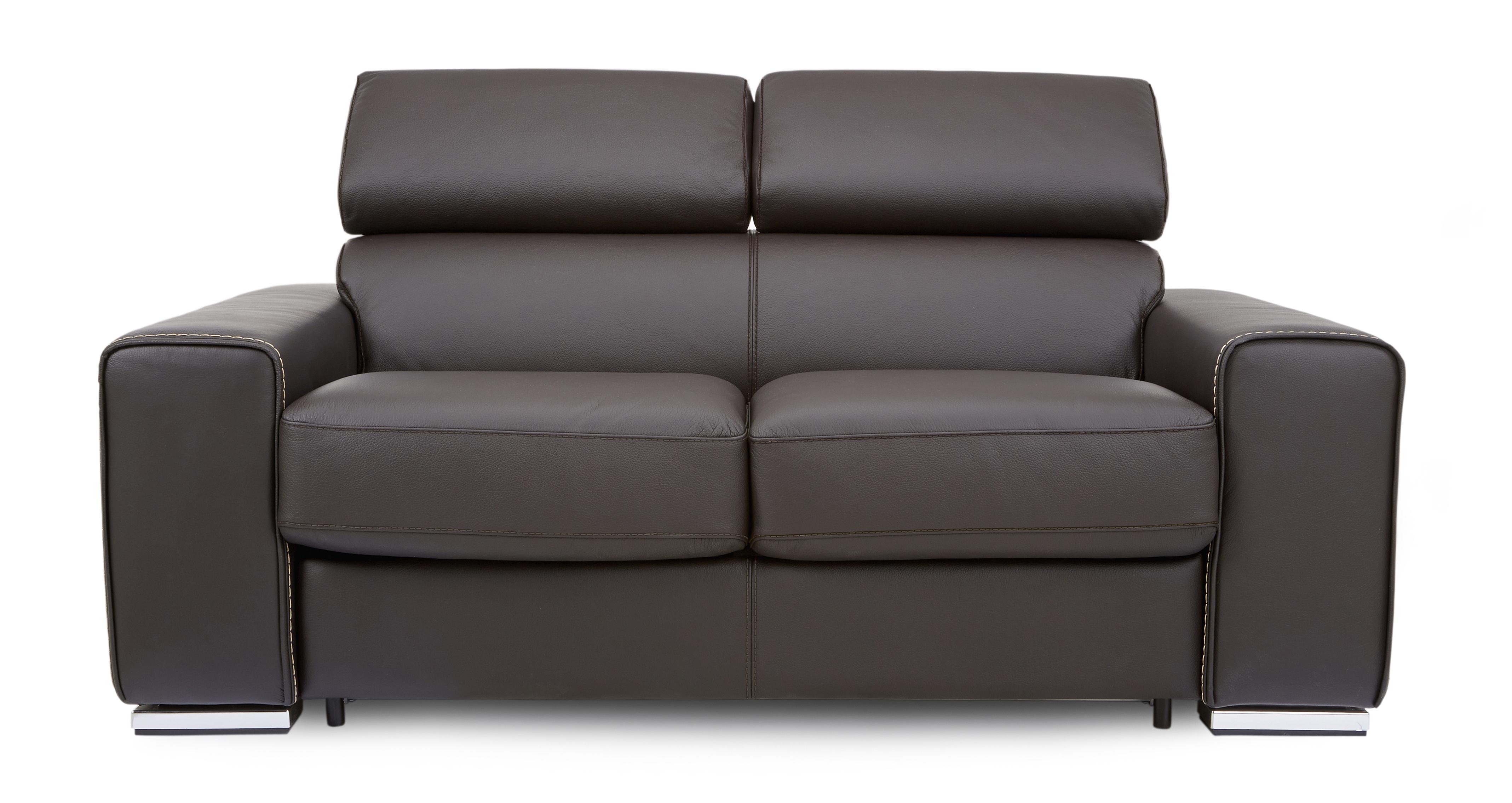Are you looking for a way to make the most out of your underused dining room? Transforming it into a functional home office is a great way to repurpose the space and add value to your home. With more and more people working from home, having a designated workspace is essential. Here are some tips on how to convert your dining room into a home office. 1. Clear out the dining room furniture The first step in converting your dining room is to clear out all the furniture. This includes the dining table, chairs, and any other decorative items. You want a blank canvas to work with when designing your home office. 2. Choose a suitable desk The centerpiece of your home office will be the desk. Consider the size and layout of your dining room to determine the best desk option. You can opt for a traditional rectangular desk or get creative with a corner desk or a standing desk. 3. Invest in a comfortable chair A comfortable chair is a must-have for any home office. Since you'll be spending a lot of time sitting at your desk, it's important to choose a chair that offers good support for your back and promotes good posture. 4. Create storage solutions To keep your home office organized and clutter-free, you'll need storage solutions. Depending on the size of your dining room, you can opt for a bookshelf, filing cabinet, or wall shelves. Make sure to utilize vertical space to maximize storage. 5. Add proper lighting Lighting is crucial for a home office. Natural light is ideal, so if your dining room has windows, make sure to utilize them. You can also add task lighting, such as a desk lamp, to brighten up your workspace. 6. Make it comfortable Since you'll be spending a lot of time in your home office, make sure to add elements that make it comfortable. This can include a cozy rug, some plants, and personal touches like photos or artwork. 7. Consider a standing desk If you're someone who gets restless sitting at a desk all day, consider investing in a standing desk. This will not only promote better posture and reduce back pain, but it will also give you the option to switch up your work position throughout the day. 8. Add some privacy If your dining room is open to the rest of the house, you may want to add some privacy to your home office. This can be achieved by adding a room divider or curtains to section off the space. 9. Incorporate your style Your home office should be a reflection of your style and personality. Don't be afraid to add some decorative touches, such as a colorful rug or some artwork, to make the space feel more personalized and inviting. 10. Keep it organized Last but not least, make sure to keep your home office organized and clutter-free. This will not only make it more functional but also make it a more enjoyable space to work in.Converting a dining room into a home office
If you have an extra dining room that is rarely used, you may want to consider turning it into a bedroom. This is a great way to add an extra bedroom to your home, whether you're expecting guests or looking to create a cozy guest room. Here's how to convert your dining room into a bedroom. 1. Remove all dining room furniture The first step is to clear out all the furniture in the dining room. This includes the dining table, chairs, and any other decor. You want a blank canvas to work with when designing your bedroom. 2. Choose a suitable bed The centerpiece of your bedroom will be the bed. Depending on the size of your dining room, you can opt for a full-size bed, a daybed, or even a pull-out sofa bed for maximum versatility. 3. Create storage solutions Since you'll be using the room as a bedroom, you'll need to incorporate storage solutions. This can include a dresser, closet space, or under-the-bed storage options. 4. Make it cozy To make your bedroom feel cozy and inviting, add some soft lighting, comfortable bedding, and decorative touches like throw pillows and blankets. 5. Consider privacy If the dining room is connected to the rest of the house, you may want to add some privacy to your new bedroom. This can be achieved by adding curtains or a room divider to separate the space. 6. Add personal touches To make the bedroom feel like a true retreat, don't forget to add personal touches like family photos, artwork, or decorative items that reflect your style and personality. 7. Utilize natural light If your dining room has windows, make sure to utilize natural light to brighten up the bedroom. This will not only make the space feel more spacious but also save on electricity costs. 8. Keep it clutter-free To maintain a peaceful and relaxing atmosphere in your new bedroom, make sure to keep it clutter-free and organized. This will not only make the space more functional but also promote better sleep. 9. Incorporate a seating area If you have enough space, consider adding a small seating area to your bedroom. This can be a cozy reading nook or a spot to relax and unwind after a long day. 10. Make it versatile Lastly, make sure to design your new bedroom in a way that allows for versatility. This means incorporating furniture and decor that can be easily rearranged or repurposed in the future if you decide to change the room's function.Converting a dining room into a bedroom
If you have young children, a playroom can be a great addition to your home. It not only keeps toys and clutter contained but also gives your kids a designated space to play and be creative. Here's how to convert your dining room into a playroom. 1. Remove dining room furniture The first step is to clear out all the dining room furniture. This includes the dining table, chairs, and any other decorative items. You want a blank canvas to work with when designing the playroom. 2. Create storage solutions To keep the playroom organized and clutter-free, you'll need to incorporate storage solutions. This can include toy bins, shelves, or even a toy chest. 3. Add a play area The main feature of the playroom will be the play area. This can include a play kitchen, a train table, or a playhouse. Make sure to choose items that your children will enjoy and that fit within the space. 4. Incorporate seating To create a comfortable space for your kids to play, consider adding a seating area. This can be a small table and chairs or a bean bag chair where they can sit and read or play with toys. 5. Make it bright and colorful A playroom should be a fun and inviting space for kids. Incorporate bright colors, playful patterns, and fun decor to make the room feel lively and energetic. 6. Utilize vertical space If your dining room is on the smaller side, make sure to utilize vertical space to maximize the playroom's potential. This can include wall shelves or hanging storage solutions. 7. Add a learning area Incorporating a learning area in the playroom is a great way to promote education and creativity. This can include a small table for arts and crafts or a chalkboard for drawing and practicing letters. 8. Make it safe Since the playroom is for children, safety is a top priority. Make sure to secure any furniture or items that could be a potential hazard, and choose non-toxic materials and furnishings. 9. Keep it organized To avoid chaos in the playroom, make sure to keep it organized and tidy. This will not only make it easier for your children to find and play with toys but also make clean-up time more manageable. 10. Make it fun! Last but not least, have fun with designing your playroom! Involve your kids in the process and let them choose some of the decor and toys to make the space truly their own.Converting a dining room into a playroom
Are you tired of having to leave your house to go to the gym? Why not transform your underused dining room into a home gym? This will not only save you time and money but also allow you to work out in the comfort of your own home. Here's how to convert your dining room into a gym. 1. Clear out the dining room furniture The first step is to remove all the dining room furniture. This includes the dining table, chairs, and any other decorative items. You want a blank space to work with when designing your home gym. 2. Determine your fitness goals Before purchasing any equipment, determine your fitness goals and what type of workouts you'll be doing in your home gym. This will help you decide on the necessary equipment and layout. 3. Invest in equipment Depending on your fitness goals, you may want to invest in some equipment for your home gym. This can include a treadmill, weights, resistance bands, or even a yoga mat and a mirror for stretching and bodyweight exercises. 4. Utilize wall space Since the dining room is likely not a large space, make use of wall space to maximize your workout area. You can hang resistance bands or add a pull-up bar to incorporate more exercises into your routine. 5. Keep it organized To avoid clutter and make your workouts more efficient, make sure to keep your home gym organized and tidy. This means having designated spots for equipment and keeping the space free of any unnecessary items. 6. Add mirrors for motivation Adding mirrors to your home gym can serve two purposes: checking your form during workouts and providing motivation. Seeing your progress and hard work can be a great motivator to keep pushing yourself. 7. Incorporate proper lighting Lighting is important for any workout space. Make sure to have enough natural or artificial light to avoid eye strain and make your gym feel more inviting and energizing. 8. Make it your own Your home gym should be a space that motivates and inspires you to work out. Add personal touches like motivational quotes, photos, or music to make the space feel more personalized and enjoyable. 9. Consider soundproofing If you live with others or have neighbors close by, consider soundproofing your home gym to minimize noise and avoid disturbing others. This can be achieved by adding sound-absorbing materials to the walls or using rubber mats under equipment to reduce noise. 10. Keep it versatile Lastly, make sure to design your home gym in a way that allows for versatility. This means incorporating equipment and exercises that can be easily modified or switched up in the future to keep your workouts challenging and effective.Converting a dining room into a gym
If you're a book lover, converting your dining room into a library can be a dream come true. It not only adds value to your home but also provides a quiet and peaceful space to escape into your favorite books. Here's how to convert your dining room into a library. 1. Remove dining room furniture The first step is to clear out all the dining room furniture. This includes the dining table, chairs, and any other decorative items. You want a blank slate to work with when designing your library. 2. Determine your book storage needs Before designing your library, determine how many books you have and how much storage space you'll need. This will help you decide on the best bookshelves or storage solutions for your collection. 3. Add comfortable seating A library should be a cozy and comfortable space to curl up with a book. Add a comfortable chair or a reading nook with a cushion and pillows to make the space inviting and relaxing. 4. Incorporate proper lighting Lighting is crucial in a library. Make sure to have enough natural or artificial light to avoid eye strain and make reading more enjoyable. You can also add a desk lamp or floor lamp for task lighting. 5. Make it organizedConverting a dining room into a library
Converting a Dining Room: The Ultimate Guide to Transforming Your Space
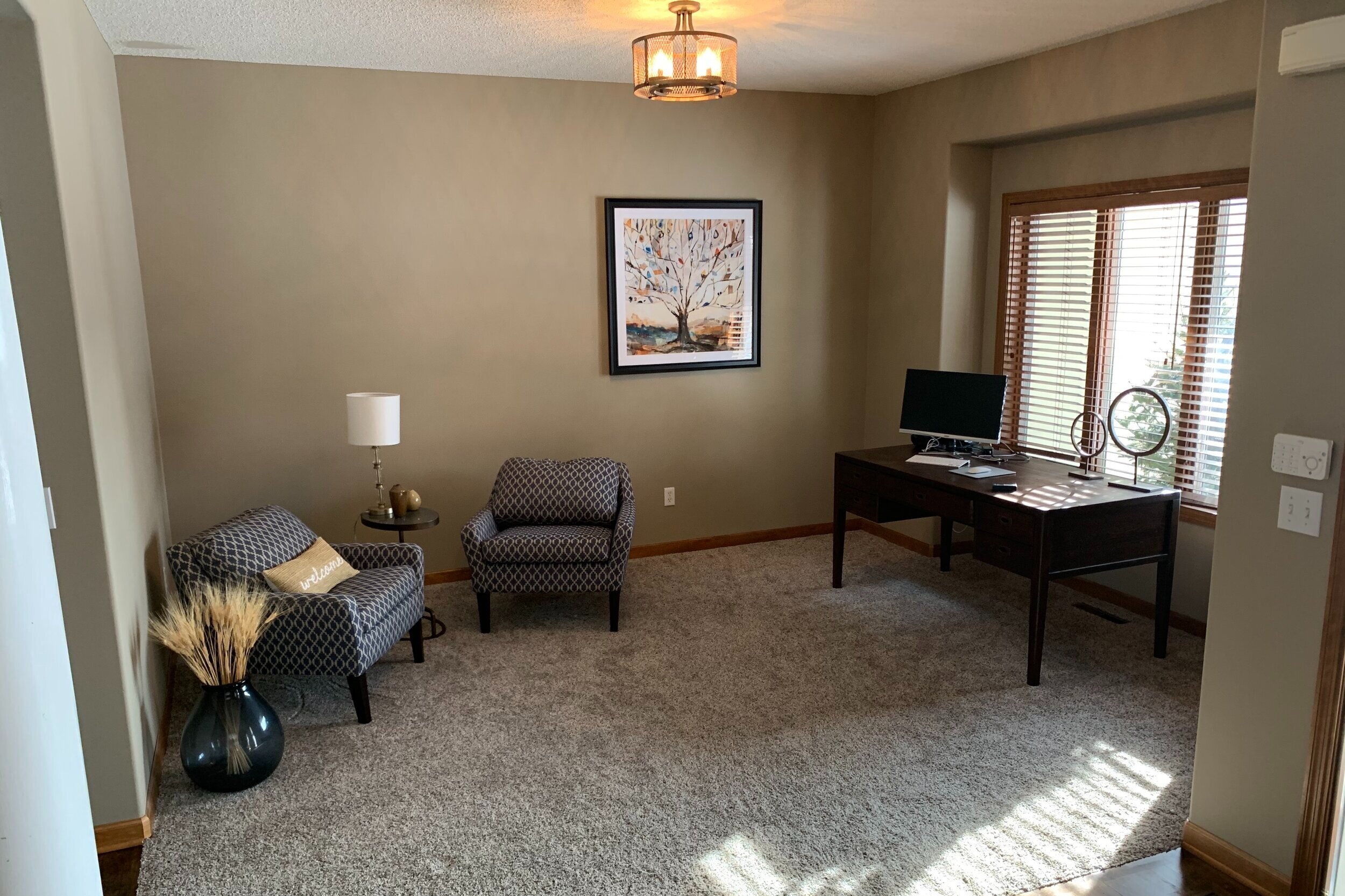
Why Convert Your Dining Room?

When it comes to house design, every room serves a specific purpose. The living room is for relaxation, the bedroom for rest, and the kitchen for cooking. But what about the dining room? This often underutilized space can be transformed into a functional and stylish room that serves more than just a place to eat. Converting your dining room can not only add value to your home, but also create a versatile space that can be used for a variety of purposes.
The Process of Converting a Dining Room

The first step in converting your dining room is to determine how you want to use the space. Do you want a home office? A playroom for the kids? A cozy reading nook? Once you have a clear idea of your desired function, it's time to get creative with the design.
Start by decluttering and removing any bulky furniture. This will give you a blank canvas to work with and make the space feel more open and inviting. Then, consider adding multi-functional furniture to maximize the space. For example, a table with built-in storage or a bench with hidden compartments can provide both seating and storage solutions.
Next, lighting is key in setting the mood and functionality of the room. For a home office, task lighting such as a desk lamp is essential, while for a reading nook, a cozy floor lamp can create the perfect ambiance. Don't be afraid to mix and match different types of lighting to create a layered and dynamic look.
Design Tips for a Converted Dining Room

When it comes to design, the possibilities are endless for a converted dining room. However, there are a few key tips to keep in mind to ensure a cohesive and functional space.
First, color scheme is crucial. Choose a color palette that reflects the purpose of the room. For a home office, opt for calming and focused colors such as blues or greens. For a playroom, bright and playful colors like yellows or pinks can stimulate creativity and energy.
Flooring is also an important aspect to consider. If the dining room already has hardwood or tile floors, layering with a rug can add warmth and texture to the space. For a home office, a plush rug can make the room feel more comfortable and inviting, while for a playroom, a durable and easy-to-clean rug is a must.
Lastly, don't forget about decor and personal touches . This is where you can really let your creativity shine and make the space feel truly yours. Hang up artwork that inspires you, add a cozy throw blanket to your reading nook, or display your child's artwork in the playroom.
With these tips in mind, converting your dining room into a multi-functional space can be an exciting and rewarding project. Not only will it add value to your home, but it will also provide a space that can adapt and grow with your changing needs and lifestyle.




